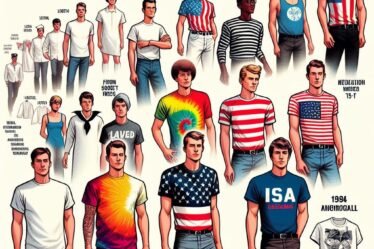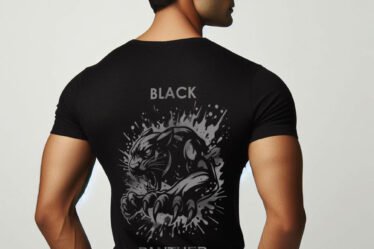
“Perfect” traditional attire can vary widely depending on cultural, regional, and personal preferences. Different cultures around the world have their own traditional clothing, each with its unique beauty and significance.
Let’s explore an array of the world’s most celebrated and widely embraced traditional attires, delving into the rich tapestry of cultural garments that have captivated global admiration.
1. Japanese Kimono
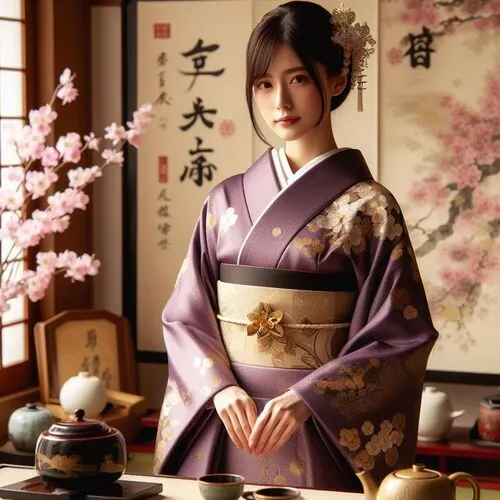
The Japanese kimono is a special outfit that’s really important in Japan’s culture and history. It’s been around for more than a thousand years and has its beginnings in China. The word “kimono” means “thing to wear” in Japanese. Kimonos are straight robes shaped like a “T” that go down to the ankles. They have collars and long sleeves. There are different kinds of kimonos like Furisode, Hakama, and Yukata. Usually, kimonos are made from silk, but nowadays, they can be made from all sorts of materials, even artificial ones.
However, some well-known and respected kimono brands and manufacturers that have historically been recognized for their quality craftsmanship include Chiso, Ichiroya, Hosoo, Yamatoya Honten, Kaneko Gankyo
2. Indian Sari
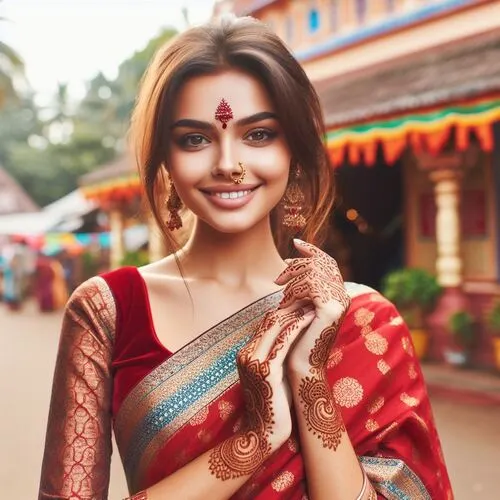
The Indian saree, often spelled as sari, is a traditional garment that holds immense cultural and social significance in India. A saree is a long piece of cloth, typically around six to nine yards in length, that is draped elegantly around the body. It is one of the oldest forms of clothing in India and is worn by women of all ages.
India being a diverse country, different regions have their own styles and traditions of draping the saree. The way a saree is draped can vary, with various styles such as Nivi, Bengali, Gujarati, and Maharashtrian, among others. The saree is often paired with a blouse and a petticoat, which is a fitted underskirt.
Saree brands and manufacturers in India have been celebrated for their quality craftsmanship and unique designs. Some prominent Indian saree manufacturers are Sabyasachi Mukherjee, Manish Malhotra, Ritu Kumar, Raw Mango, Neeru’s Emporio, and brands are Kanjivaram Silks, FabIndia, Nalli Silk Sarees, Palam Silks and Kalyan Silks.
3. Scottish Kilt

The kilt is part of the traditional Scottish Highland dress, which also includes accessories like the sporran (a pouch), a sgian-dubh (a small knife), a kilt pin, and a sporran. The kilt is a knee-length garment made of tartan fabric, which is a distinctive woven pattern of different colored stripes and checks. Kilts are pleated at the back, and the pleats are usually sewn in place. The front apron of the kilt is flat.
The kilt has a long history, and its origins can be traced back to the 16th century. However, the modern kilt as we know it today evolved in the 18th and 19th centuries. Kilts are typically made from wool and require proper care to maintain their appearance. They are often dry-cleaned or hand-washed.
There are numerous manufacturers and retailers of Scottish kilts within Scotland such as Kinloch Anderson, Houston Traditional Kiltmakers, Slanj Kilts, The Kilt Store, 21st Century Kilts, Heritage of Scotland, The Scottish Kilt Shop.
4. Chinese Hanfu
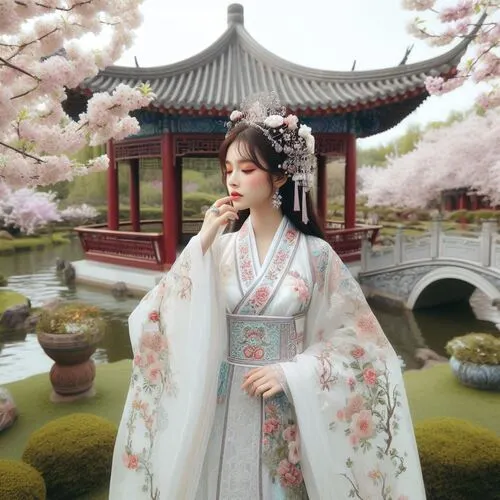
Hanfu has its roots in ancient China and was the traditional attire of the Han Chinese, the predominant ethnic group in China. It has a history spanning over three millennia. Hanfu includes a wide variety of styles, each associated with different dynastic periods. Common elements include robes, wraps, and sashes. Key styles include Zhongshan Zhuang, Ming Dynasty-style, Tang Dynasty-style, and more.
Hanfu is traditionally made from silk or other high-quality fabrics. The choice of fabric and colors often holds cultural significance, with certain colors associated with specific seasons, events, or social status. The Headwear such as hairpins, coronets, and caps, is an integral part of Hanfu, and Accessories like sashes and belts are used to complement the overall outfit.
There are numerous manufacturers and designers of Chinese Hanfu within China, some notable entities associated with Hanfu production are Ruifuxiang, Guo Pei, Hanfu Star, Baofulu, Tang House, Fairy Hanfu, Hanfu Forest, Chu Yuan Zi and more.
5. Moroccan Djellaba

The Moroccan Djellaba is a traditional, long robe-like garment that is worn by both men and women in Morocco and other North African countries. The Djellaba is a loose-fitting, hooded robe that usually reaches the ankles. It is typically made from comfortable, breathable fabrics such as cotton, wool, or a blend of the two. The choice of material often depends on the climate.
The Djellaba is characterized by its simple yet elegant design. It has long sleeves, a loose fit, and a pointed hood (called a “qob”) that can be worn up or down. The front of the Djellaba often features a slit or a front opening, making it easy to put on and take off. While the basic design remains consistent, there can be variations in the Djellaba’s embroidery, colors, and patterns. Different regions and communities may have their own unique styles.
6. Nigerian Agbada
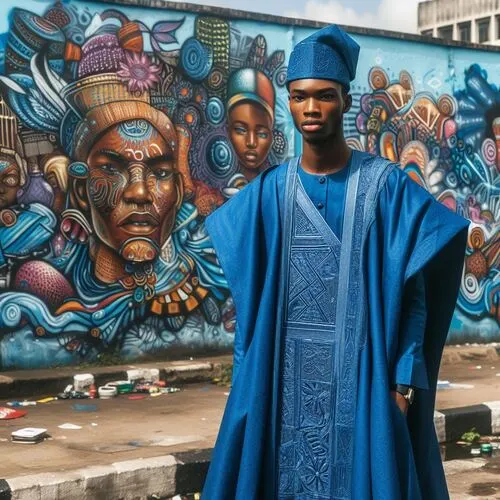
Agbada is a three-piece ensemble consisting of a flowing gown (agbada), a shirt (awotele or dansiki), and trousers (sokoto). The gown is the most prominent and voluminous part of the outfit. Traditionally, Agbada is worn by men, but there are contemporary adaptations for women. Female Agbada is a more tailored and feminine version of the outfit, often with a slimmer silhouette and unique embellishments.
Agbada is typically crafted from high-quality and luxurious fabrics such as silk, cotton, brocade, or lace. One of the defining features of Agbada is its intricate embroidery. The gown is adorned with colorful and detailed patterns, often with symbolic meanings.
7. Swedish Folkdräkt

Folkdräkter have roots in historical clothing styles and often draw inspiration from the attire worn by rural communities in the past. They are a way of preserving and celebrating Sweden’s cultural heritage. A typical Swedish folkdräkt consists of various components, including a blouse or shirt, a skirt or dress, an apron, a vest, and headgear. Accessories such as jewelry, scarves, and belts are also often part of the ensemble.
The colors, patterns, and motifs on a folkdräkt can carry specific meanings and symbolism. They may represent regional identity, social status, or even convey messages about the wearer, such as marital status. Traditional folkdräkter are often handmade, with great attention to detail. Many are passed down through generations, and families take pride in creating and maintaining these costumes.
8. Peruvian Pollera
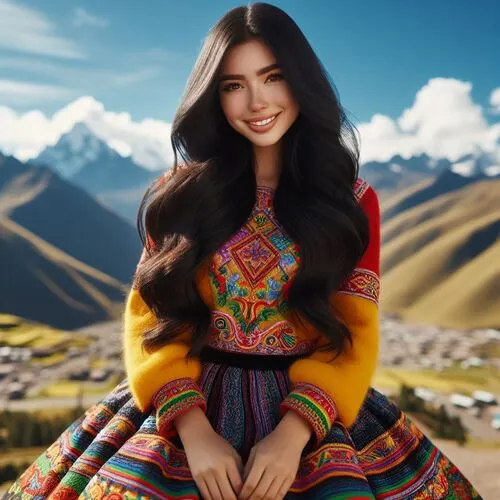
The Peruvian pollera is a traditional and elaborate skirt worn by women in various regions of Peru. The pollera is a symbol of cultural identity and pride for many Peruvian women. The pollera is known for its intricate and colorful design. The skirts are typically adorned with vibrant embroidery, sequins, lace, and other decorative elements.
Traditional polleras are often handmade by skilled artisans or seamstresses. The craftsmanship involved in creating these skirts is highly valued, and the process may include embroidery, weaving, and other intricate techniques. The pollera is often paired with a traditional blouse, which may also feature intricate embroidery and embellishments.
9. Saudi Arabian Thobe
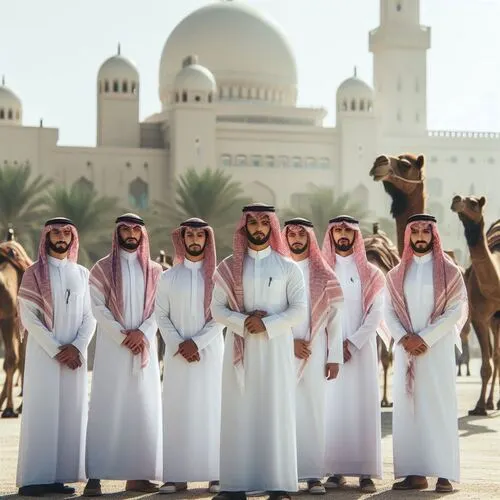
The Saudi Arabian thobe, also known as a dishdasha or kandura, is a traditional garment worn by men in Saudi Arabia and other Gulf countries such as the United Arab Emirates, Qatar, Kuwait, Bahrain, and Oman. The thobe is a long, ankle-length robe worn by men, often as daily attire. It is considered the traditional dress of Saudi Arabian men.
The most traditional and common color for a thobe is white. White is preferred for its ability to reflect sunlight, keeping the wearer cool in the intense heat. The thobe typically has a simple and elegant design, characterized by its loose fit and straight cut. It is often made from lightweight and breathable fabrics suitable for the hot climate of the region. Men often wear a head covering known as a ghutra or shemagh with the thobe. The ghutra is a square piece of fabric folded and held in place with an agal (black cord).
Some well-known and popular brands that have been associated with Saudi Arabian thobes are Al Khaleeji Thobes, Al Siddique Thobes, Al Dar Thobe, Al Karam Thobe, Abdulaziz Al-Ahmad Thobes, Kashkha, Al Hattan Thobes, Balj Thobes, Al Mori Thobes, Qasr Al Thobe and more.
10. Mexican Charro Suit

The Mexican Charro suit, also known as a “traje de charro” or Charro outfit, is a traditional Mexican costume associated with the charro, a skilled horseman or cowboy from Mexico. The Charro suit has historical roots in the attire worn by horsemen and cattle herders in Mexico during the colonial period. Over time, it evolved into a symbol of Mexican culture and identity.
A traditional Charro suit typically consists of three main pieces: a jacket (chaqueta), pants (calzones), and a vest (chaleco). The Charro outfit is typically completed with a wide-brimmed hat, known as a sombrero with leather boots and may include spurs as part of the ensemble. The boots are often high-cut and may have intricate designs
11. Maori Korowai
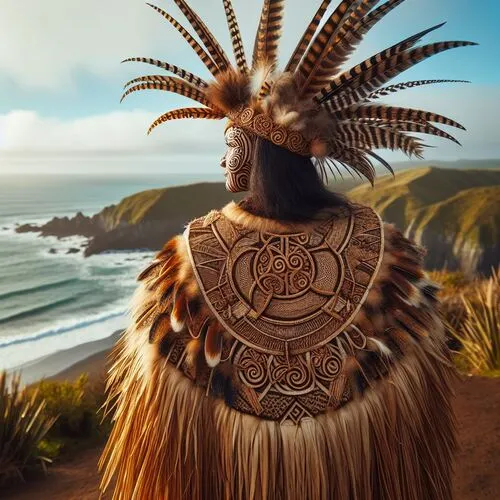
The Maori korowai is a traditional feathered cloak worn by the indigenous people of New Zealand, The korowai is a symbol of prestige, status, and mana (spiritual power) within Maori culture. The korowai is a cloak made entirely of feathers, typically sourced from native birds such as the kiwi, kaka, kereru, and more. The art of creating korowai is passed down through generations within Maori families.
The process of creating a korowai involves intricate weaving techniques. Skilled artisans, often women, meticulously attach individual feathers to a woven base, forming a beautiful and durable cloak. The patterns and designs on a korowai convey important cultural information. They may represent the wearer’s tribal affiliations, genealogy, and other aspects of their identity.
12. Turkish Kaftan
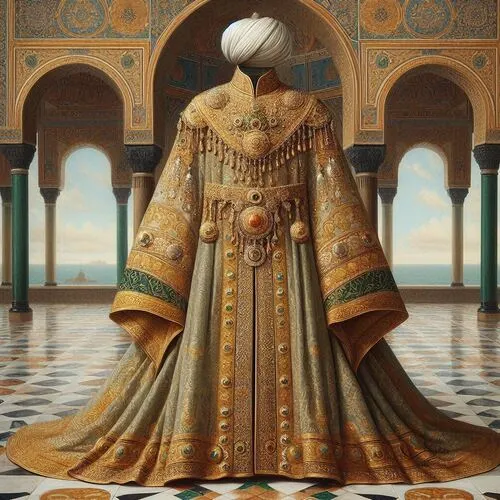
The Turkish kaftan is a traditional and historical garment that has played a significant role in Turkish culture and fashion. The kaftan has a long history in Turkish culture, dating back to the Ottoman Empire. It was initially introduced as a robe worn by the Ottoman rulers and elite members of society. It was often associated with royalty and was worn by Ottoman sultans and their courtiers.
Turkish kaftans were known for their elaborate embroidery, intricate patterns, and rich decorations. Gold and silver threads, along with gemstones and pearls, were often used to embellish the garments. Typically kaftans features a loose-fitting, flowing silhouette. It is a long robe that reaches the ankles, with wide sleeves and often worn belted at the waist.
13. Tibetan Chuba
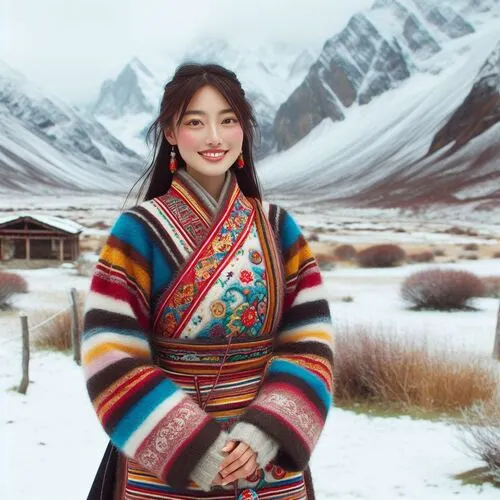
The Tibetan chuba, also known as “chupa,” is a traditional garment worn by the people of Tibet and other regions in the Himalayas. The chuba is a traditional and iconic Tibetan garment that has been worn for centuries. It is designed to be suitable for the harsh climate and mountainous terrain of the Tibetan Plateau. The chuba is a unisex garment, and both men and women wear variations of it. The style and embellishments may differ slightly based on gender, age, and occasion.
The chuba is designed to provide warmth in the cold temperatures of the Tibetan Plateau, often made from heavy fabrics like wool or yak wool. It consists of layers, including a shirt or blouse as the innermost layer, and a wrap-around outer robe secured with a belt. The high collar protects the neck from cold winds, and wide sleeves allow ease of movement, with the option to reveal contrasting lining by turning back the cuffs.
14. Korean Hanbok

The Korean hanbok is a traditional Korean dress known for its vibrant colors, graceful lines, and symbolic significance. The hanbok has a long history, dating back to the Three Kingdoms period (57 BCE – 668 CE). Over time, it evolved into various styles reflecting the social status, age, and gender of the wearer. It has been worn by Koreans for centuries and remains an iconic representation of Korean culture.
The hanbok consists of several components. For women, this typically includes a jeogori (jacket), chima (skirt), and a goreum (cloth tie). Men’s hanbok includes a jeogori and baji (pants). Hanboks are known for their vibrant and harmonious color combinations. Hanboks are designed differently for men and women, and there are distinctions based on age. For example, younger individuals may wear brighter colors and more elaborate designs, while older individuals may opt for more subdued tones.
15. African Dashiki
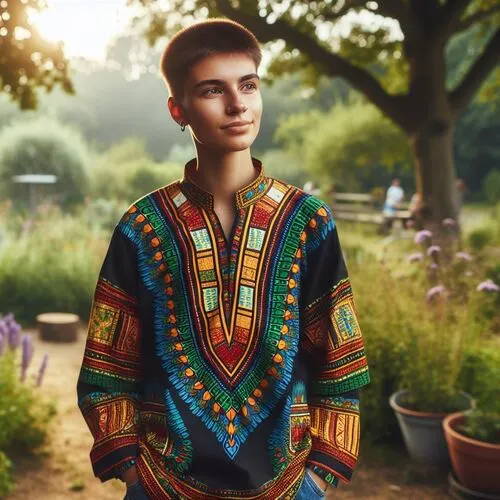
The Dashiki is a colorful and loose-fitting tunic worn by people in West Africa, particularly in countries like Nigeria, Senegal, and Mali. The term “Dashiki” is derived from the Yoruba word “dàńṣíkí,” which means “shirt” or “underneath.” It originated in West Africa, with the Yoruba people of Nigeria. The Dashiki is a loose-fitting, pullover tunic with a simple construction. It has wide, elbow-length sleeves and a V-shaped collar. The body of the Dashiki is typically square or rectangular in shape.
Dashikis are worn by both men and women. While the basic design remains the same, there may be variations in the length, sleeve style, and overall fit to accommodate different preferences. Dashikis are known for their vibrant colors and bold, geometric patterns. The patterns often include intricate designs, symbols, and motifs that hold cultural and symbolic significance.


